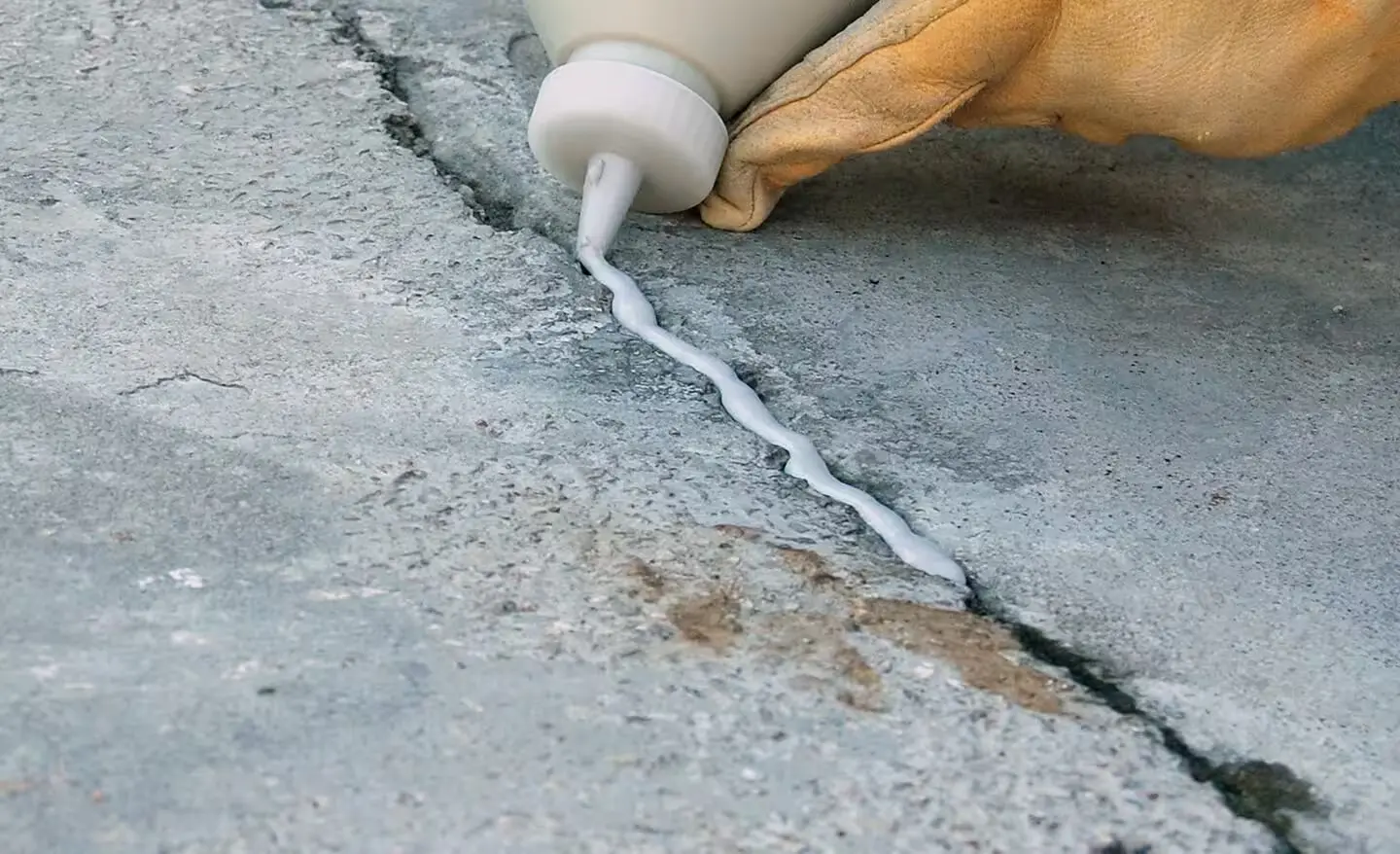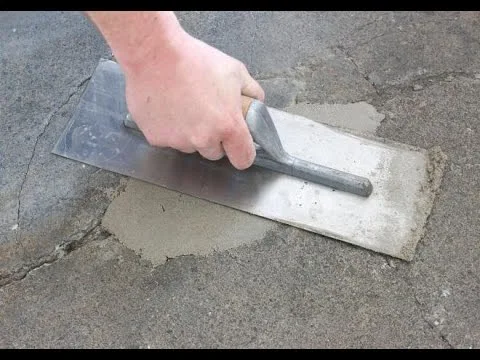Concrete is among the most common construction materials but even it cannot go Scott-free without receiving an occasional decay. When some time passes you may see that concrete slabs, walls or floors develop some cracks in them which may lead to some issues if not sealed. For homeowners, property managers, or even DIY enthusiasts it is important to know how to fix concrete cracks and prevent damage as you use the property.
This guide will further explain the causes and various classifications of concrete cracks, why repair must not be delayed and how to do it. By the end, you will be ready to safeguard your concrete and extend its durability and strength when it comes to construction requirements.

Knowing The Reasons for Formation of Concrete Cracks
First of all, concrete cracks do not grow magically; they originate from some definite conditions: environmental, structural, as well as human ones. Below are some of the primary reasons for cracking:
Freeze-Thaw Cycles: Concrete is porous and absorbs water, which upon freezing, makes the concrete crack even more in the long run.
Settling: Any movement in the subgrade that forms the base of the concrete slab will definitely cause some of the slabs to crack. This is more especially prevalent in areas that are affected by soil displacements.
Overloading: Concrete has load-bearing limits. Others that go beyond this may force the development of cracks on the walls especially when used to support heavily weighted articles such as furniture or equipment.
Improper Curing: In other words, when the concrete hardens too quickly, it does not receive enough moisture for it to set properly. This can lead to the so-called shrinkage cracks.
Poor Installation Practices: Cracking can be further promoted by inadequate forms, lack of reinforcement fibers or low quality materials.
They are the stepping stone into recognizing such causes and therefore preventing or repairing such problems like fix concrete cracks.
Types of Concrete Cracks
It is important to note that not all concrete cracks are the same; even the cracks differ in terms of their origin, width and extent of cracking. Here are the most common types:
Shrinkage Cracks
Cause: These appear as the concrete reduces water content and hardens up as a result of setting. Shrinkage cracks are normally slender and not necessarily associated with structural concern.
Solution: To prevent water penetration through the small cracks you can use products such as Liquid Cement Crack Filler.
Settlement Cracks
Cause: Long stretcher cracks may be as long as 2-3 times the width of the crack and are caused by uneven settling of the subgrade or foundation.
Solution: These cracks may necessitate reinforcement for purposes of decreasing the chances of the structures collapsing. They also prevent the further deterioration of the areas through filling and patching.
Structural Cracks
Cause: These ones originate from overloads or problems with basic structures and are slightly wider than hairline ones.
Solution: Ideal cracks in concrete slabs are limiting; structural cracks deepen such crevices. The general repair can be sealing and reinforcement typically, it is advisable to seek professional intervention.
Hairline Cracks
Cause: Frequently attributed to slight movement or thermal contraction, hairline cracks are paper thin and for the most part, not too problematic.
Solution: Interior slabs on grade can be poured with a quick-drying Liquid Cement Crack Filler that will seal water from coming through.
Hence, some of these imperfections do not need immediate repair but it pays to always keep an eye on the development of existing cracks, and other conditions that worsen should be addressed immediately to fix concrete cracks.
The Importance of Timely Concrete Repair
Therefore, failure to consider cracks in concrete may lead from small problems to major and expensive ones. Here’s why timely intervention matters:
Safety Hazards: They can progress further and become more complex with irregularities that can cause slip and fall accidents.
Structural Damage: If a building is left unattended for a long time, this may result in damp or destructive foundation/structure compromises thus the stability of the building at risk.
Water Penetration: Cracks, if not addressed, leakage occurs and this progress through the freezing and thawing process increases the crack size.
Curb Appeal: Potholes on driveway or pathways e.g. reduced external aesthetics and your property value.
In addition to the benefits to your concrete mentioned above, considering repair not only conveys long-term benefits to the dollar investment.
DIY vs. Professional Concrete Repair

Do it yourself, or contact professional help? Well this is in some sense relative to the extent of the damage that has been done.
DIY Concrete Repair
Pros:
Cost-effective for minor cracks.
Some of the Caltrans materials such as Liquid Cement Crack Filler and sealants used in the construction process are relatively easy to obtain.
Step-by-step guides offer straightforward solutions.
Cons:
Limited effectiveness for deeper or structural cracks.
The potential of misuse as another problem surfaces repeatedly.
Professional Concrete Repair
Pros:
Professionalism provides appropriate state diagnosis and sustainable recommendations.
Advanced repair techniques such as epoxy injections or reinforcement.
Ideal for wider spaces or any situation that may involve concrete settling or overall structural problem..
Cons:
Larger initial investment outlay than solutions that can be implemented through an individual effort.
Increased time spans to undertake the tasks in the processes.
Having looked at the concept, the following about the size and type of crack should be taken into consideration. When it comes to hairline and shrinkage cracks, often, people are able to repair it themselves. Structural cracks or extensive damage warrant professional attention.
Effective Concrete Repair Methods
If you’ve decided to handle the repair yourself, here’s how to fix cracks in a concrete slab using the most effective methods:
Step 1: Assess the Crack
There is also a decision in the type, size, and depth of it. While small cracks that are not very deep might only be sealed, deeper ones demand patching.
Step 2: Clean the Area
Scrape off all the dirt, dirt and any very weak concrete using a wire brush or vacuum cleaner. For those large cracks you make certain that you have the best adhesion for the next coat.
Step 3: Apply the Repair Material
Small Cracks (<1/4 inch): Some products to use include Liquid Cement Crack Filler. It is normally painted directly to the crack and it is smoothed if it becomes lumpy.
Large Cracks (>1/4 inch): For deeper kinds of gaps, wrap a patching compound around them. How to fill large cracks in concrete: He explained that for filler to be applied in layers and each layer should dry before the next layer is added.
Step 4: Smooth and Cure
Trowel it even on the surface then make sure that it cures as dictated by the manufacturer on their packaging.
As you can see these steps will allow you to counteract imperfections in the process and avoid worsening the situation.
Preventative Maintenance to Avoid Future Cracks
As a fundamental rule, it is better not to get a crack on concrete at all, if possible. Below are some preventative measures you can take:
Ensure Proper Drainage: This water will form in the areas of your concrete and cause erosion and cracking to occur. Ensure you put the correct drainage system to drain off excess water, this will prevent areas such as compounds, yards etc from becoming swampy.
Apply Sealants: From experience, frequent application of seals gives an added layer to prevent moisture from infiltrating the structure.
Monitor for Early Signs: It is good practice to check your concrete surfaces often for those small cracks or irregularities that may exist in the structure.
Avoid Overloading: Do not put extra and very large pressure loads on the concrete slabs.
Control Joints: One can also increase control joints while construction to avoid potential shrinkage and settling cracks.
These are the measures that you should take. Avoid in order to protect your surfaces following the thorough adhesion instructions for many years.
Protect Your Concrete and Follow These Recommendations
This is a major problem that requires immediate attention because failure to do so means you are likely going to spend a lot of money in the future repairing a problem that could have been prevented. Once one understands the causes, types of cracks, repair procedures and measures for prevention one has the necessary tools to produce high quality, long-lasting concrete surfaces.
Not sure where to begin? If you have wet wallpaper or faded paint on ceilings or walls, do not hesitate to call Hi Tech Construction NY for an evaluation and booking an appointment for the repair. Our team is a specialist for concrete solutions which meet your individual requirements.
Improve its stability today, because your property shouldn’t be just good enough.
To avial our services, Please visit our service page
or
